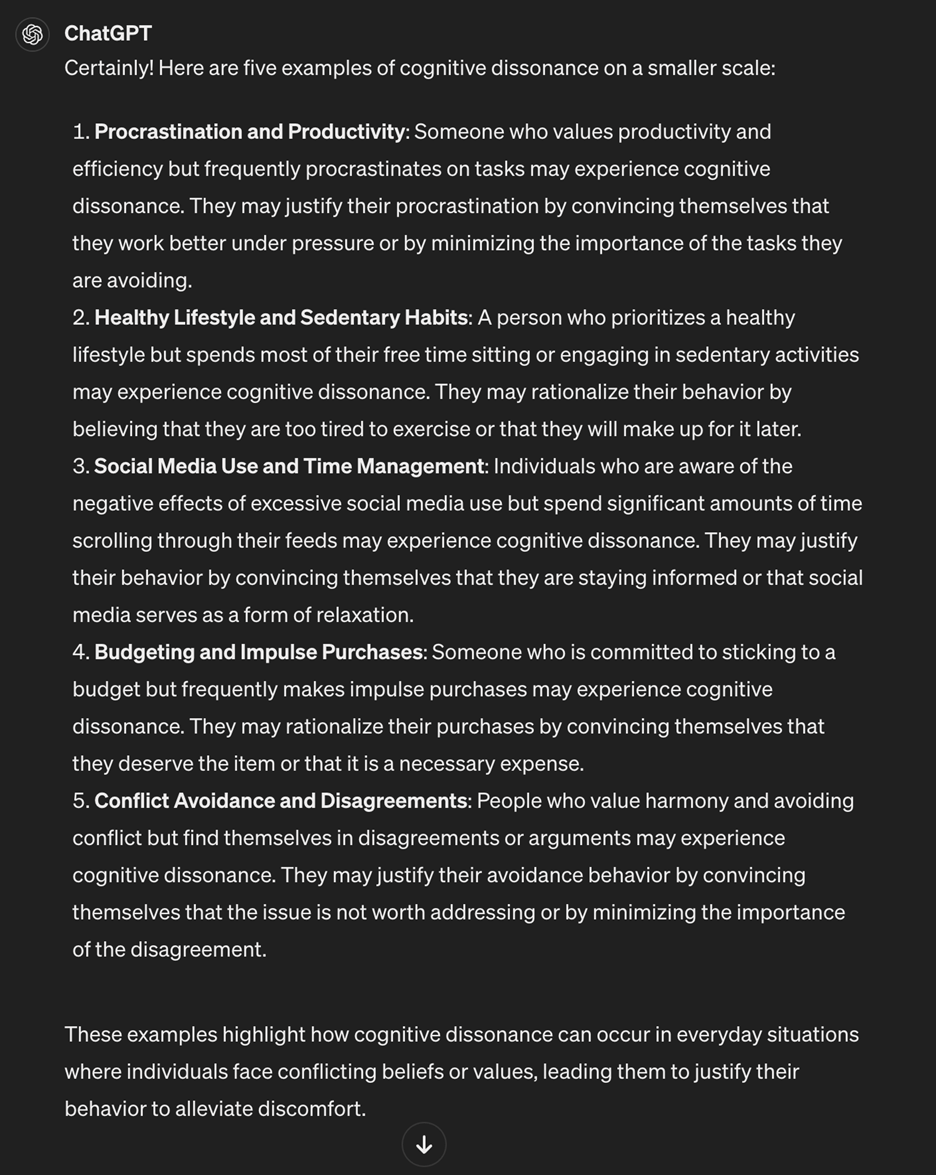"Certainly! Here are five examples of cognitive dissonance on a smaller scale:
1. Procrastination and Productivity: Someone who values productivity and efficiency
but frequently procrastinates on tasks may experience cognitive dissonance. They may
justify their procrastination by convincing themselves that they work better under
pressure or by minimizing the importance of the tasks they are avoiding.
2. Healthy Lifestyle and Sedentary Habits: A person who prioritizes a healthy lifestyle
but spends most of their free time sitting or engaging in sedentary activities may
experience cognitive dissonance. They may rationalize their behavior by believing
that they are too tired to exercise or that they will make up for it later.
3. Social Media Use and Time Management: Individuals who are aware of the negative
effects of excessive social media use but spend significant amounts of time scrolling
through their feeds may experience cognitive dissonance. They may justify their behavior
by convincing themselves that they are staying informed or that social media serves
as a form of relaxation.
4. Budgeting and Impulse Purchases: Someone who is committed to sticking to a budget
but frequently makes impulse purchases may experience cognitive dissonance. They may
rationalize their purchases by convincing themselves that they deserve the item or
that it is a necessary expense.
5. Conflict Avoidance and Disagreements: People who value harmony and avoiding conflict
but find themselves in disagreements or arguments may experience cognitive dissonance.
They may justify their avoidance behavior by convincing themselves that the issue
is not worth addressing or by minimizing the importance of the disagreement.
These examples highlight how cognitive dissonance can occur in everyday situations where individuals face conflicting beliefs or values, leading them to justify their behavior to alleviate discomfort.
"Certainly! Here are five examples of cognitive dissonance on a smaller scale:






